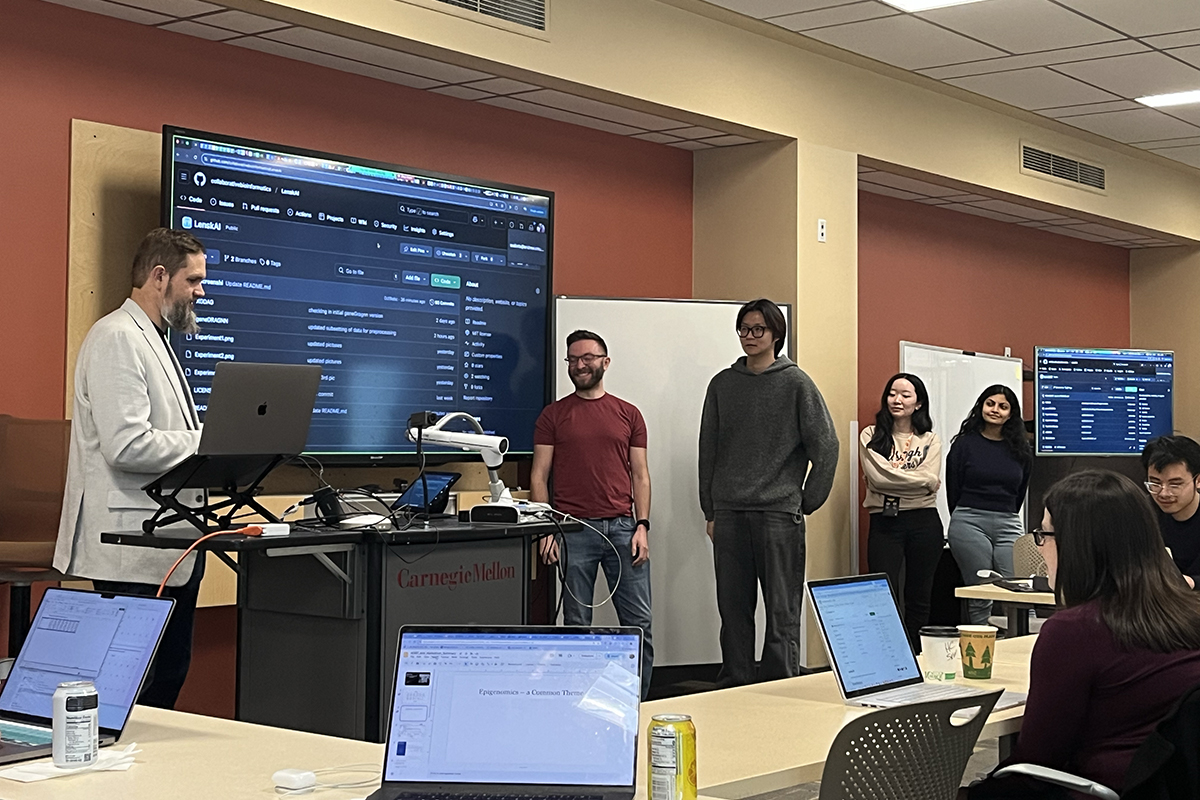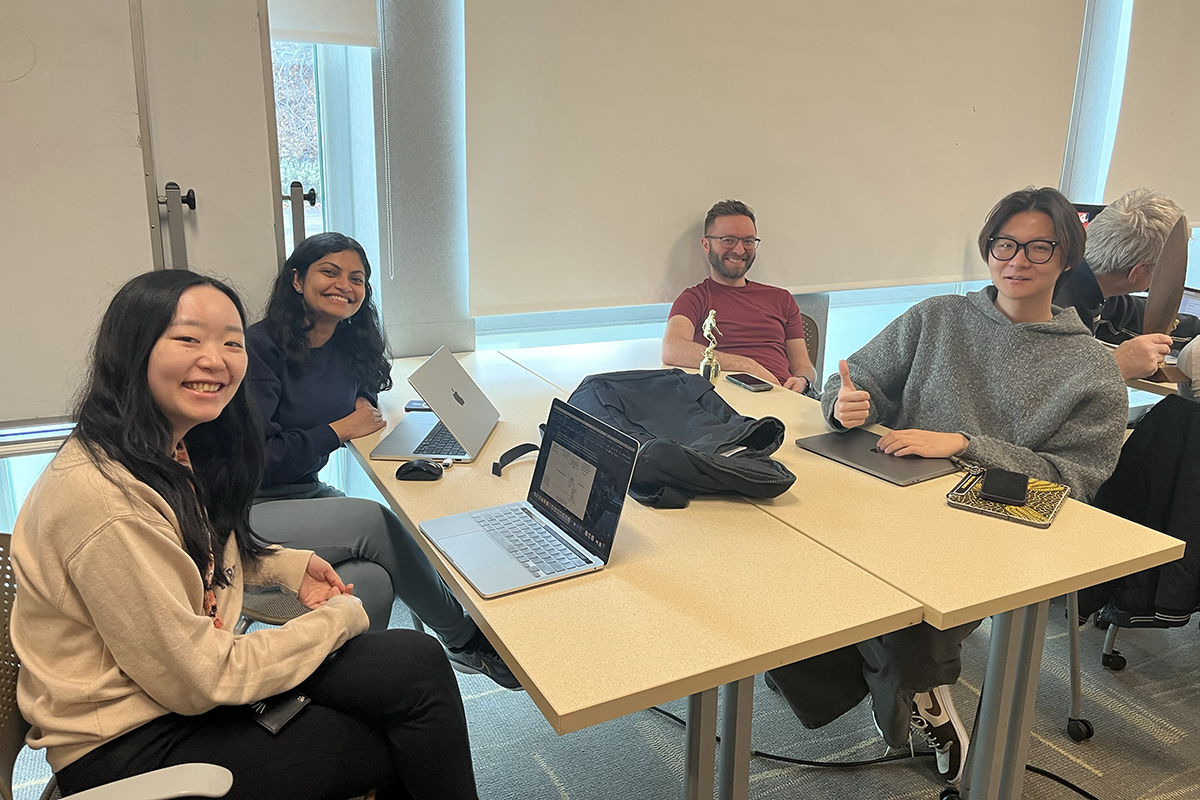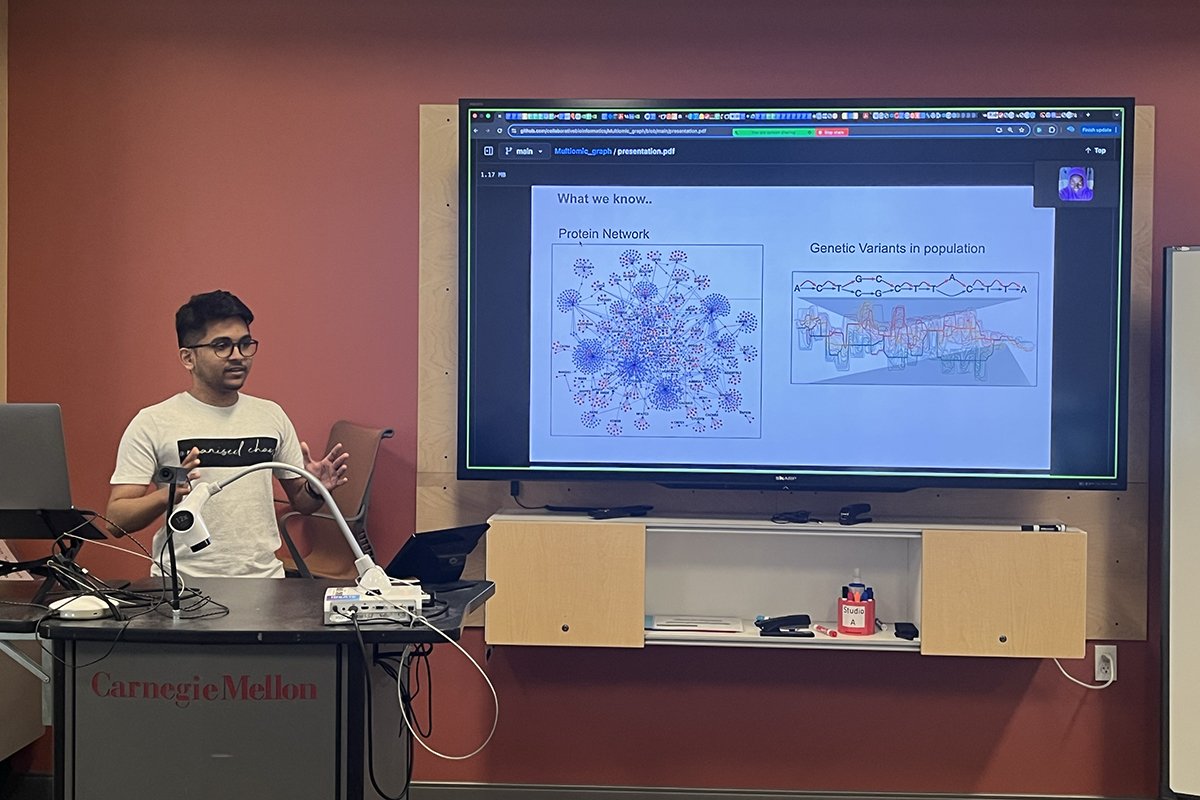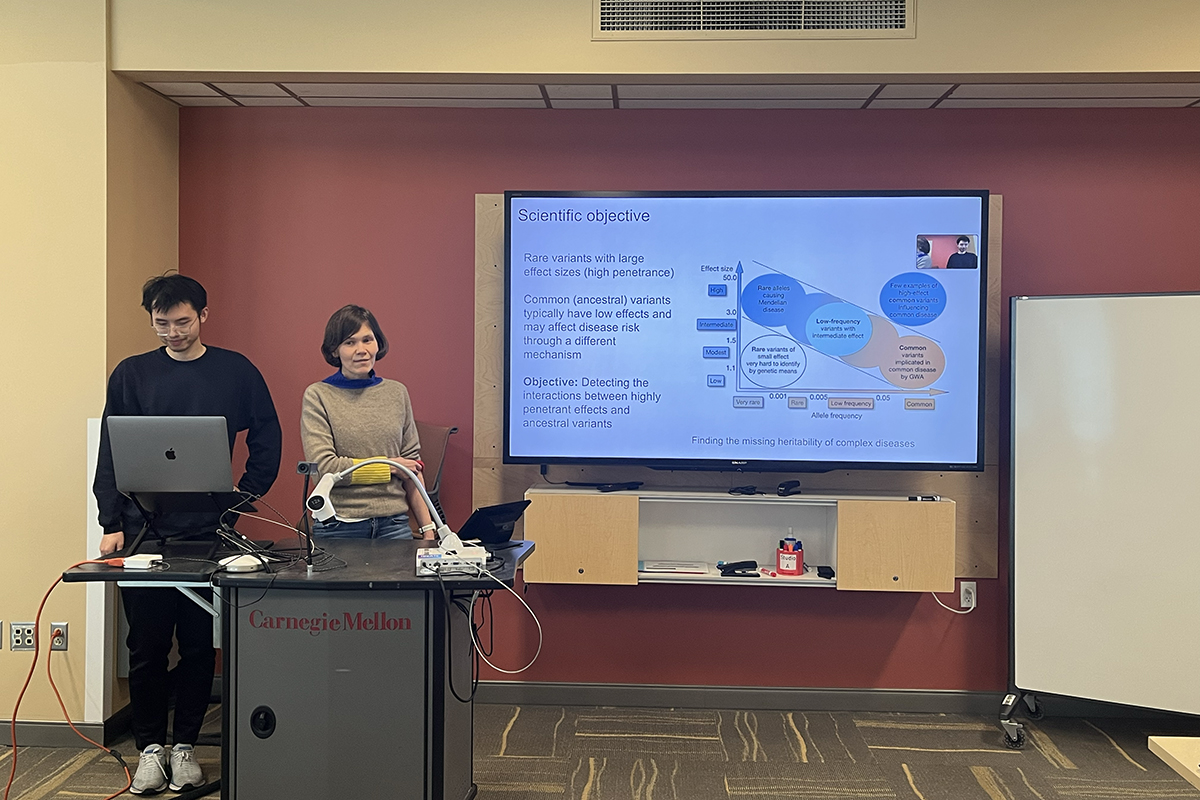
by Sarah Bender
From March 3–5, CMU Libraries partnered with California-based cloud computing and bioinformatics company DNAnexus to host their fifth annual collaborative bioinformatics hackathon in Pittsburgh. More than 30 participants from all over the world teamed up to explore machine learning and AI approaches to computational biology problems, sharing expertise, learning from their peers, and even engaging in a bit of friendly competition.
“This hackathon is a unique and fun opportunity for students and researchers to apply machine learning and AI methods to interesting problems in computational biology,” said STEM Librarian and Open Science Program Director Melanie Gainey, who organized the event along with STEM Librarian Huajin Wang and Open Source Programs Office Community Manager Tom Hughes. “The participants get to make connections with scientists from a variety of backgrounds and career stages — and they get access to a lot of bioinformatics expertise from our co-host, Ben Busby, principal scientist at DNAnexus.”
According to Busby, a longtime partner of the event, the hackathon is modeled on those established by the National Institutes of Health in 2014. This kind of event is designed to bring researchers together, presenting them with learning opportunities and giving them the chance to network with other professionals.
“The hackathons are collaborative, not competitive,” he explained. “Each team works on a different problem, with a goal of creating a working software pipeline that either pushes the limits of what is possible, or makes life easier by improving some critical process.”
Most participants were either graduate students, postdoctoral researchers, staff scientists, or faculty. They hailed from universities like CMU and the University of Pittsburgh, companies like Ariel Precision Medicine and PerforatedAI, and even internationally from countries like Australia and India and institutions like Trinity College Dublin and the Institut Pasteur. International attendees had the opportunity to attend virtually.
“This was my first hackathon, and it was an immensely rewarding experience for both advancing my technical skills and networking opportunities,” said Rebecca Satterwhite, a postdoctoral researcher from Pitt who works in a microbial genetics lab. “I was able to collaborate with an international community of coders and scientists, and connect with local, Pittsburgh-area colleagues in person. I also gained exposure to large public health datasets and computational methods for the first time.”
Teams explored various topics focused on genetic sequencing and interactions. One project aimed to modify an existing genetic analysis method called the StructLMM framework to study how genes interact with each other rather than environmental factors. Another project introduced an automated system that helps process, analyze, and visualize patient data to uncover causal relationships.
For the first time this year, judges were invited to evaluate the final presentations and award prizes to the winners. Teams were recognized for several categories, including best documentation — whether a non-team member could run the pipeline based on a team’s GitHub documentation — and most innovative — which team was the most scientifically creative in their approach. The most productive and most collaborative teams also won prizes.
However, the competition didn’t overpower the collaborative nature of the hackathon. Attendees reported that the opportunity to problem-solve alongside their peers was one of the most critical parts of the experience.
“The collaborative aspect of the event was incredibly valuable, as working with researchers, developers, and domain experts offered fresh perspectives and innovative solutions,” said Rishika Gupta, who attended the hackathon from CentraleSupélec, part of Paris-Saclay University. “It was an inspiring experience that strengthened my skills in developing solutions for biomedical data analysis and expanded my professional network.”
“Participating in the hackathon was an incredible experience that challenged us to think creatively and collaboratively,” added Arth Banka, a masters student studying computational biology. “It was exciting to see our ideas come to life and move the needle in science. Events like these foster innovation and teamwork, and we’re grateful for the opportunity to contribute to such a dynamic environment at CMU.” Hackathon outputs like code and software are publicly available on GitHub, and will be described in a preprint on BioHackrXiv.



